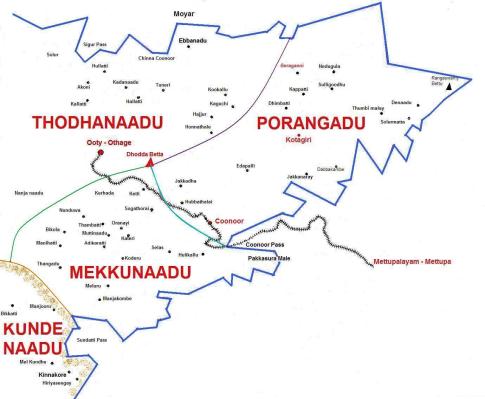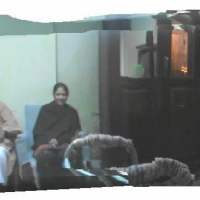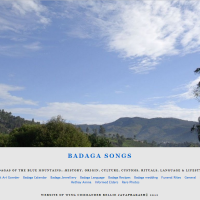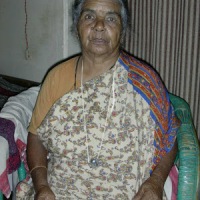Recently I had posted an article under the tiltle “Who are BADAGAS?” (see below the text high lighted in blue) and wondered whether Odayas and Thoraiyas can be included as Badagas. Sudha Arjun has sent her strong views which I feel deserve a careful study.
Sir, with the evolution of science in every field, this is the right time to further explore the truth about the origin of the Badagas. I have read most of your articles on this website which insist that Badagas have not migrated from the plains towards Mysore but the proximity of the language to Kannada cannot be denied in spite of centuries of isolation. Even to this day a Badaga can easily understand Kannada because of the major similarities between the two. We have genetics, anthropology and social sciences which will be able to provide a far more accurate picture than the lore of the Badaga forefathers- much of it lost in transmission from one generation to another. Due respect must be paid to the in-depth research of Prof Paul Hocking, without casting aside all that he has studied. On the topic of Odaiyas and Thoriyas, am not clear what you would like to prove- that they should no longer be included as Badagas, though the exact same customs, language and culture is followed for centuries as far as we can remember?
The Odaiyas seem closer to the royal family of Mysore by name (Odaiya/ Wodeya) and further research into this is definitely merited. On the Thoraiyas- there could be several possible reasons why they have been made the servants of the Badagas. These could only be because –
a) they were living in the mountains before the Badagas but were subjugated
b) they came after the Badagas, therefore had no claims of their own and had to be subservient to them
c) for reasons unknown, a few people were set aside and made servants within the Badagas themselves. If I am right, there are less than 10-15 Thoraiya hattis which itself makes the claim that they were servants to Badagas of 274 hattis require more investigation.
Leaving aside the topic of the original Badagas, would like to know what you plan to achieve through further separate of these 3 groups – do you want the Odaiyas and Thoraiyas to stop calling themselves Badagas and continue to maintain the rigidity of exclusion for the next 100 centuries?Either way in the spirit of seekers of the truth, let us hire/ engage scientists who can give us an accurate view of the past, starting with genetic and DNA matching to identify the truth about the origins of all these groups.
******
Who are Badagas? – by Wg Cdr JP
First of all, both the people and the language are called Badaga. The question, though appears to be a simple and straight forward one, is more complex than initially assumed. It was taken for granted that anyone speaking Badaga language ( also known as Badugu/Badagu) was considered a Badaga. The initial ‘research’ done by the westerners, in fact a large number of them being Italian/German missionaries whose ‘mission’ was to convert the hill tribes to Christianity (later joined by British officials and some anthropologists) wrongly clubbed all Badaga speaking people together and wrongly assumed that Badagas to be a community who migrated from the plains of Mysore (Karnataka).
Though, the Badagas were, initially divided into three distinct groups known as Odaya, Gowda and Thoraiya, and the Gowdas further sub-divided themselves into sects like Gowda, Haruva, Kanakka, Adhikari, Lingaites etc.
But a deeper analysis and research may lead us to come to the conclusion that the title Badaga should belong ONLY to Gowdas who were/are one of the original indigenous tribes of the Nilgiri hills in Southern India. Living in the hills for thousands of years. The myth of migration was thrust upon them due to the fact that a smaller number of, Vokkaligas from the plains of Mysore (Chamaraja Nagar), might have migrated to the hills during the reigns of Malik Kafur in the 12th centaury and later the ruthless regime of Tipu Sultan.
The clear distinction that divides the Badagas is due to the fact the the Gowdas do not marry Odayas or Thoraiyas.
Odayas consider themselves superior to Badaga Gowdas, being initially temple priests. Confined to a few villages and generally economically weaker, the Odayas, especially the males, would not enter individual Badaga houses (inner rooms like Ede Mane) though they would come to Badaga villages (hattis) and take alms of grains (mainly rice and millet (Batha). They would cook the food outside hattis and eat among themselves.
Thoraiyas were considered as domestic help (Aevil Thoraiyaru) in olden days, and were deployed to carry out errands between the hattis mainly to convey messages. Now, Thoraiyas do not like to be known as inferior to Badagas. They also live in cluster of villages and marry only among themselves.
So, it may not be out of place to call only the Gowdas as Original Badagas who live in 274 villages called hattis spread around the length and breath of the hills of the Nilgiris called NAKKU BETTA in the four Seemes (Nadus).
Please do give your views in the comments column.
_________________________________________________
Hariharan EB
1) There are 44 Thoreya hatties. I have details with me.
2) The caste division in the Badaga Community mimics the same divisions which exist in the Mysore and Kongunadu plain areas.
3) Wodeyas, Adhikaris and Kanakkas were/are Lingayats. Wodeyas trace their heritage to the royal family of mysore and married among themselves, based on existing “MORAY” within their framework. Few decades ago, they changed their community certificates from “Hindu Badagar” to “Veerashaiva Langayat”.
4)Adhikaris (field officers) and Kanakkas (accountants) too trace their origin to the Mysore royal kingdom, but not to the royal family. nevertheless, all the three Jatis (Kola) became lingayats once the royal family themselves converted to lingayatism during the 1300s. there are many sources available in google to verify this fact.
5) The Gowdas were/are the Agricultural group with their own land holding and domestic animals. they had/have “moray” system and used to marry only among themselves until about 100 years ago. There is a strong Gowda Community in today’s Karnataka too.
6) The Thoreyas belonged to the service class in the bottom of the existing Community pyramid. they had/have “moray” system and marry only among themselves. There is a Thoreya Community in today’s Karnataka too. Few years ago, they changed their community certificates from “Hindu Badagar” to “Hindu Thoreya” to get MBC status benefits.
7) The Haaruvas were the Brahmanical priests in almost all Gowda/thoreya (Maalingayya and Herodayya) temples not very long ago. Times have changed, they are mostly confined to their own 8 major villages in Naakubetta.Of late, in order to get ST status, quite a few self styled Historians have delineated the Badaga Community from its historical past on “popular demand” to show us as one separated from other Communities, living in complete isolation in the Hills without any Jati divisions. I dont agree with this claim. Its my firm opinion that about 600-700 years ago, the language of Badugu and Kannada were probably one and the same.
~~~~~~~~~~~~~~
Dr. Sundaradevan Nanjiah IAS
I agree. In my opinion, it doesn’t matter whether we are migrants or indigenous. After all, the entire human species is supposed to have evolved from the migrants from Africa (the so-called ‘Out of Africa’ theory). It is high time we get a DNA profile of each kola and each subsect, especially when the cost of DNA sequencing has come down. If we could spend about Rs. 5-7 lakhs for a DNA analysis of about 100 persons, both male and female, we could set this issue at rest for ever. Incidentally, the Govt Arts College, Ooty has been quietly doing some important research and their primary analysis seems to be exciting. Let us await the publication of their findings.


















 Mookuthi
Mookuthi  Chinna
Chinna 






 ==
==


![Seemae [See'may] & Morae [Mo'ray] (relationship)](https://i0.wp.com/badaga.wordpress.com/files/2008/11/nakku-betta1.jpg?resize=200%2C200)








































